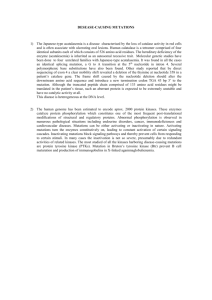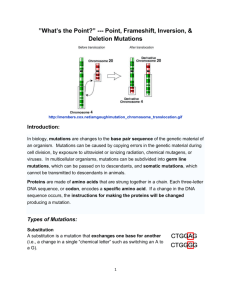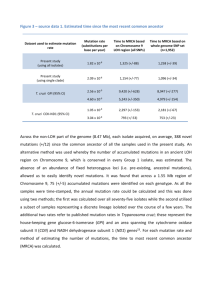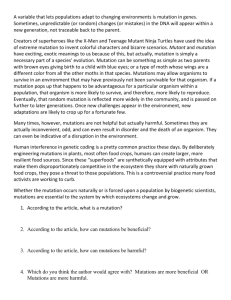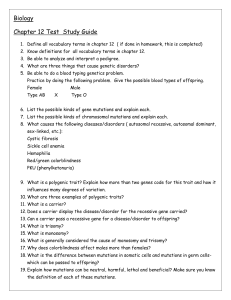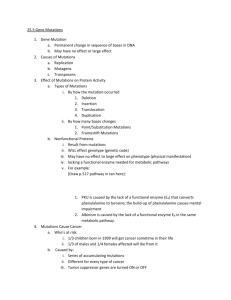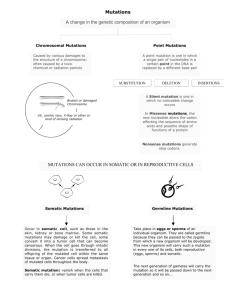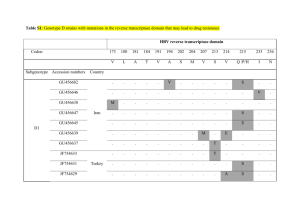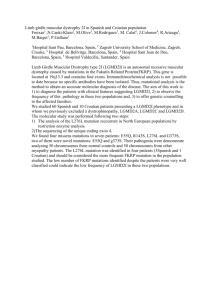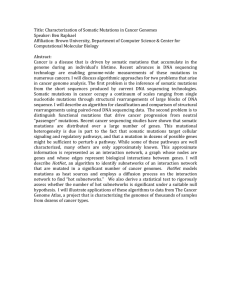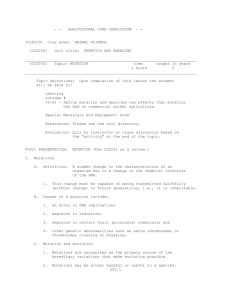Problem statement from Dr. Camps
advertisement
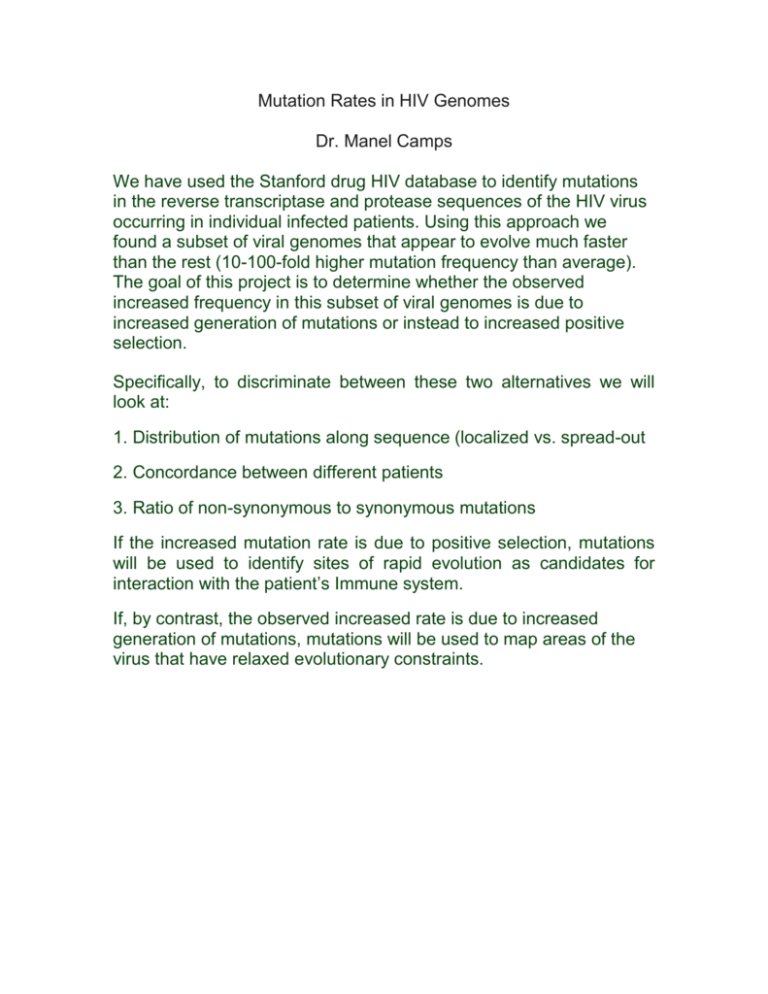
Mutation Rates in HIV Genomes Dr. Manel Camps We have used the Stanford drug HIV database to identify mutations in the reverse transcriptase and protease sequences of the HIV virus occurring in individual infected patients. Using this approach we found a subset of viral genomes that appear to evolve much faster than the rest (10-100-fold higher mutation frequency than average). The goal of this project is to determine whether the observed increased frequency in this subset of viral genomes is due to increased generation of mutations or instead to increased positive selection. Specifically, to discriminate between these two alternatives we will look at: 1. Distribution of mutations along sequence (localized vs. spread-out 2. Concordance between different patients 3. Ratio of non-synonymous to synonymous mutations If the increased mutation rate is due to positive selection, mutations will be used to identify sites of rapid evolution as candidates for interaction with the patient’s Immune system. If, by contrast, the observed increased rate is due to increased generation of mutations, mutations will be used to map areas of the virus that have relaxed evolutionary constraints.






